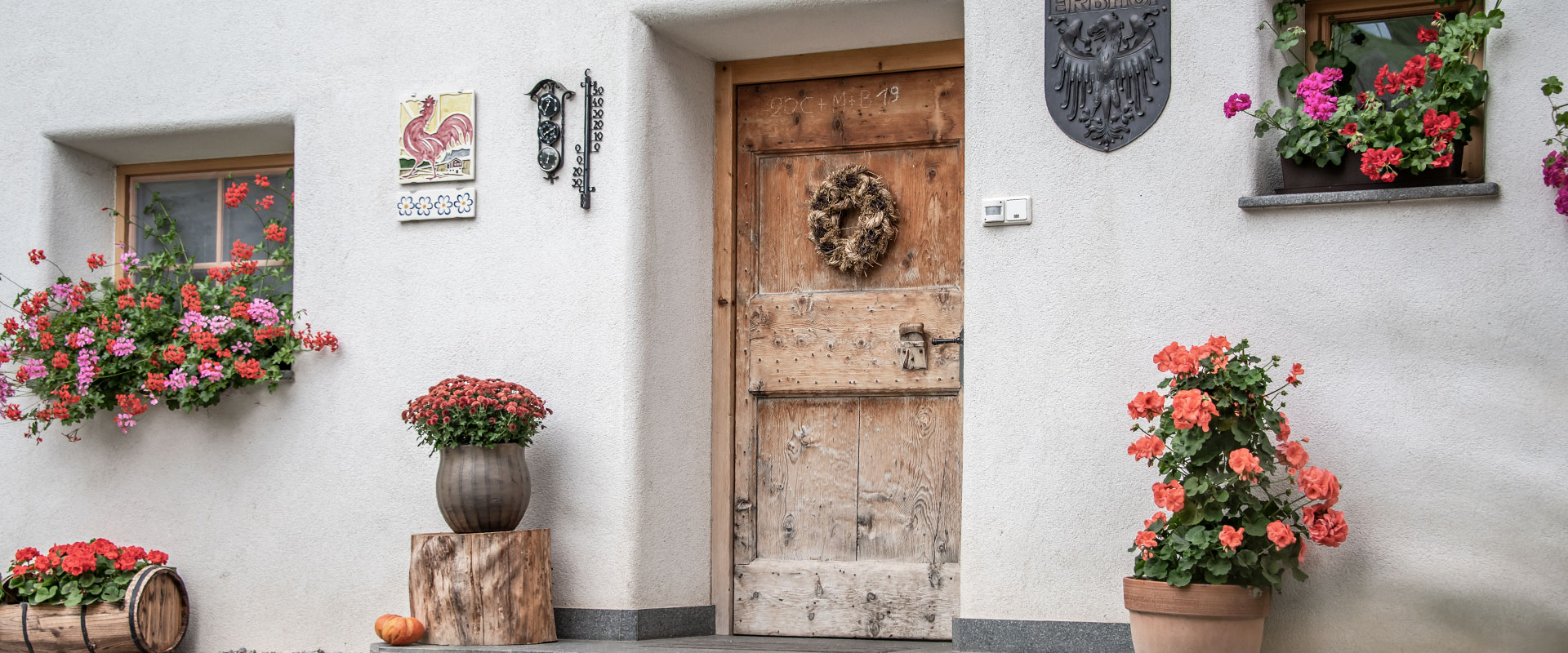A farm with a long tradition
Our farm has a long history. The name “kalkiol” was first mentioned in official documents in 1288 (“the nether farm of kalkiol”). Later mentions of the name refer to other forms such as “curia Kalkiol in Vilness” (1400), Calkioeler (1489), and “Cantiol” (1647). In 1547, Jehenibein Obercantioler is referred to as the “owner of the O Cantiolhofs” in a document, and in 1619, there is a reference to “Balser Obercantioler” as the owner of O. Cantiol. The name “Kalkiol” probably originates from the meaning for a lime kiln (lime/chalk = kalk in German), which existed in this area at a very early stage.
It is assumed that the neighbouring farm “Verlotthof” was once a part of the “Kantiolerhof”. In 1439, there is reference to “the three farms Cantiol”, in the rent-roll of Count Meinhard II’s county Tyrol (circa 1590) – “O. Cantiol is what one calls Verlotten”.
In 1984, we were awarded the “Erbhofurkunde” by the South Tyrolean government. This award attests to the Oberkantiolhof as being in our family’s possession for over 200 years, i.e. it has always been passed down to an heir in the family and not sold.
In 1978, the house was completely renovated, however we made sure that many valuable features of the old building were maintained, including the vault in the kitchen (which was used to smoke ham and meats), the wooden stove in the “Stube”, the cellar, and the wooden panelling throughout the house.
Nine years later, in 1987, it was time to also rebuild the barn and hayshed in order to ease the hard work and to make more room for the growing number of cows.
During 2010/2011, the house was again renovated and all guest rooms and apartments were completely rebuilt.
The grain mill
Our old grain mill was operated with water until the 1960s and was used to mill wheat, oat, barley and rye. When electricity became available at the farm in 1967, the mill was transferred to the shed and is now used to mill the grains for our animals.
The chapel
A small 18th century chapel dedicated to the holy Mary is part of the Oberkantiolhof, and is witness to the deep faith of the farming community in this area.

An old legend of the Oberkantiolhof
The name of our farm “Kantiol” is mentioned in many legends and myths of the Villnöss valley showing the significance of the locality in the history of the valley.
One of these legends is the tale of the “Wild Men”:
“The Wild Men”
Once upon a time there lived a bunch of giants, the so-called Wild Men beneath the mountain range of the Geislerspitzen. Every now and again, in dark and stormy nights, the farmers living in the Villnoess valley heard loud noises and bangs, which sounded like balls hitting pins in a gigantic ten pin bowling game. This was accompanied by roaring loughter and swearing. Rumour had it that the Wild Men were having a night of bowling in those nights.
One night, two brothers from the Oberkantiolhof came back late from work in the woods and had to stay overnight in a hut in the mountains. As they went to sleep in the hay shed, two giants came in and settled down for the night. The two brothers were scared to death and did not dare say a word or even whisper to each others. As they lay there, the noises from the ten pin bowling game started, and they were louder and more frightening than the brothers had ever heard before.
As dawn approached, the noises seized, and the two giants prepared to get up and leave. However, as they headed for the door, one of the turned around and said to the two brothers: “Had you asked, we would have told you.” But because the brothers were to scared to say anything, the secret of the gigantic bowling game was never discovered.”


